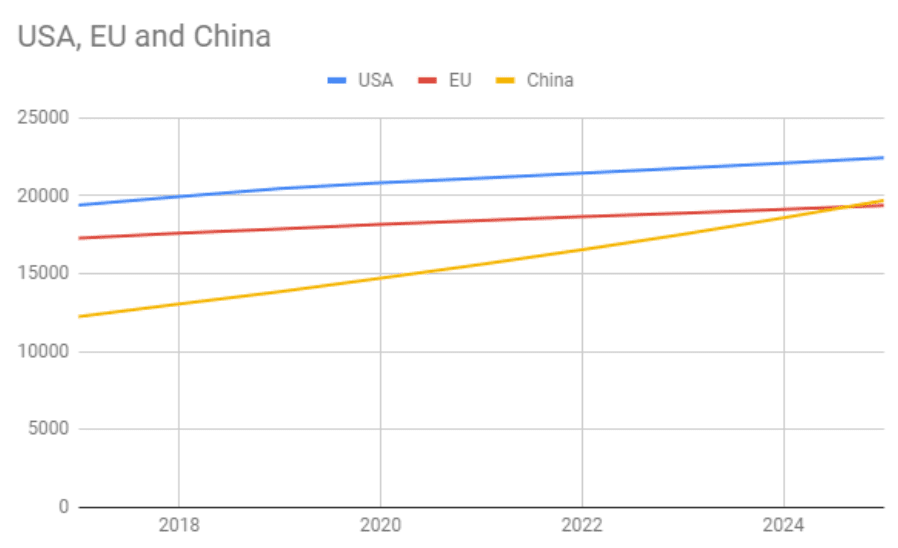Last Updated on February 18, 2019
A few weeks ago those visiting the US Census Bureau’s website a were met with a notice saying “Due to a lapse in federal funding portions of this website are not being updated.” A country’s statistical office is often the primary source of credible information for many economic reports, so analysts were shocked that this was the case for the world’s leading economic superpower. Now that the government shutdown is over it’s worth taking a look at it from a different angle.
The political gridlock created by the 2018 elections has forced both parties, despite previously being unable to agree on a budget deal, to come to the table and negotiate. The longest government shutdown of the USA’s history shows how well its system of checks and balances still works well enough to put real pressure on the office of the President. On the other hand that also gives countries with a more authoritarian bend some competitive advantage. China and Russia for example experience little difficulty in realizing the intended economic and trade policies of their respective heads of state.
China is once again threatening to take the title of the world’s largest economy and President Trump’s tariff policy may be an instinctual attempt to prevent them from securing it on the global stage. A number of reports published over the past few weeks now suggest that China could potentially overtake the USA in GDP as soon as 2021, despite their growth rate having slowed to 6.4% (the lowest increase of the past 28 years) in 2018. In my opinion such a conclusion could only be drawn by misrepresenting the actual macroeconomic data. Competition between the two countries is fierce and continues to intensify. Although China has made strides in attempting to catch up, the chasm between the two countries remains daunting. Only a severe recession in the US could give way to China bridging that gap within the specified time period.
For reference I’ve created my own projection based on the IMF’s GDP growth estimates as well as using GDP figures by various relevant national banks expressed in US dollars. The chart below shows my expected growth trajectory of the world’s three largest economic blocks up to 2025. As you can see the European Union’s position appears to be the least secure. The USA’s growth rate is approximately 1% higher so it’s slowly moving out of their reach. One of the reasons is that the EU’s consumer habits are much more conservative due to its aging population. In addition its political structure has failed to fully address matters of integration and national self-determination, leading to a highly inflexible and endlessly bureaucratic system that severely hinders their growth potential and gives China the ability to contest the second place spot.

The forecast model also anticipates that the USA’s growth rate will slow down whereas China’s growth would still increase at a modest rate. It’s important to note that China’s domestic market still has the characteristics and structure of a developing country. If the country’s leadership is willing to open up its market in order to invigorate domestic consumption, they could realistically stabilize their GDP growth at approximately 6% even under unfavorable trade conditions. China’s retail sales growth rate was close to 8% in 2018, however, opening the gates to foreign products could result in a massive wave of increased consumption. At the same time it would also worsen their trade balance. The success of such a move would predominantly depend on how effectively it’s executed. Fortunately for President Xi Jinping the amount of political power centralized in his hands means he does not have to worry about being obstructed by political opposition, were he to attempt it.
Following the collapse of the USSR, political economist Francis Fukuyama called western liberal democracies “the end point of mankind’s ideological evolution and the universalization of the final form of human government.” The first two decades of the 21st century have since then seen the rise of charismatic populist leaders across the globe. Weakening parliamentary authority and compromising the independence of the branches of power has become routine in former socialist countries as well as many other regions such as Turkey and the Philippines. Their leaders don’t have to face either institutional checks or political opposition, allowing them to concentrate their efforts on creating economic opportunities. China has a distinct and undeniable advantage in its ability to implement policy. While the US and EU cannot compete with China’s undeniable advantage in its ability to implement policy, they could look for another area where they have the home field advantage. One such area might be free enterprise.
